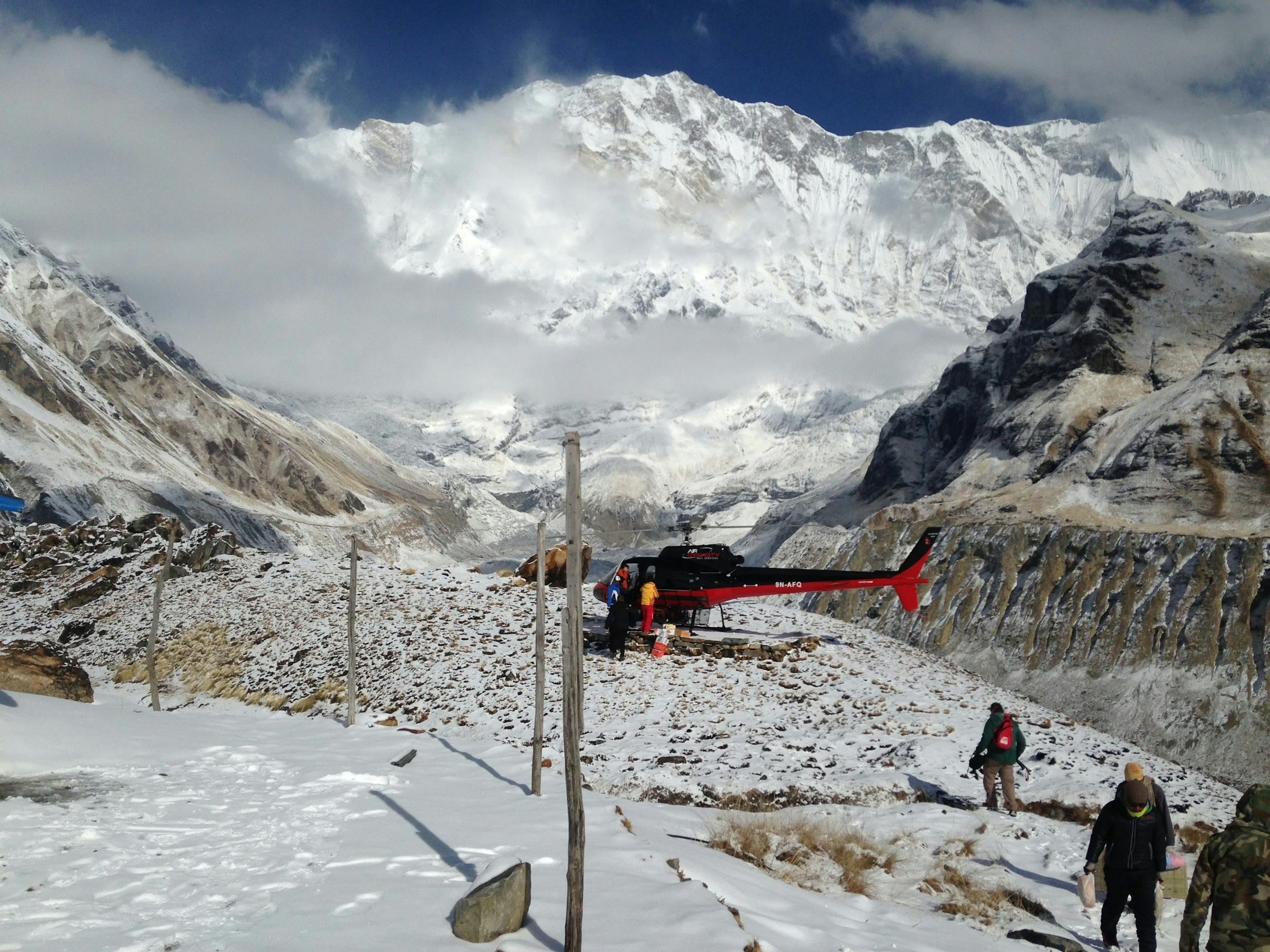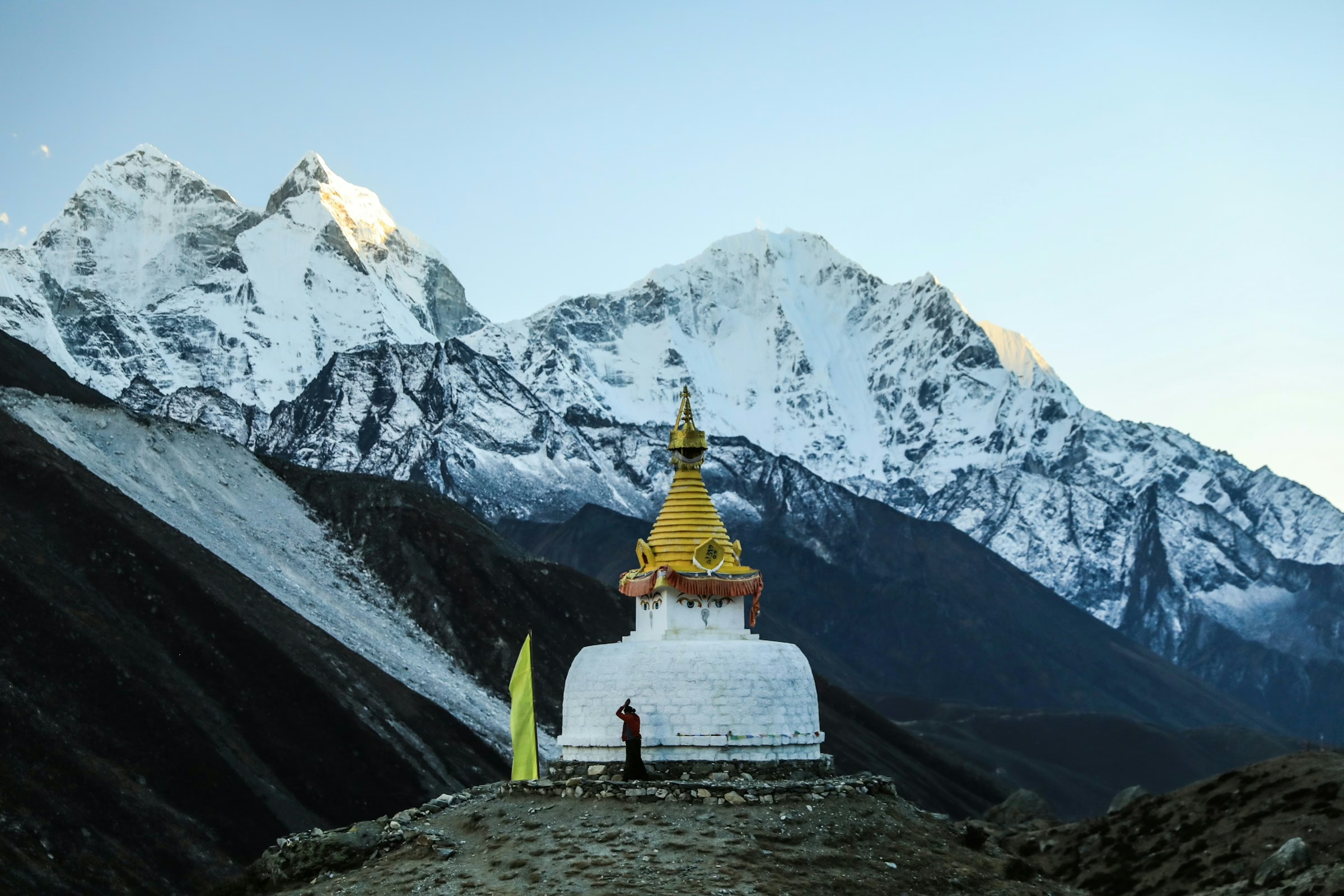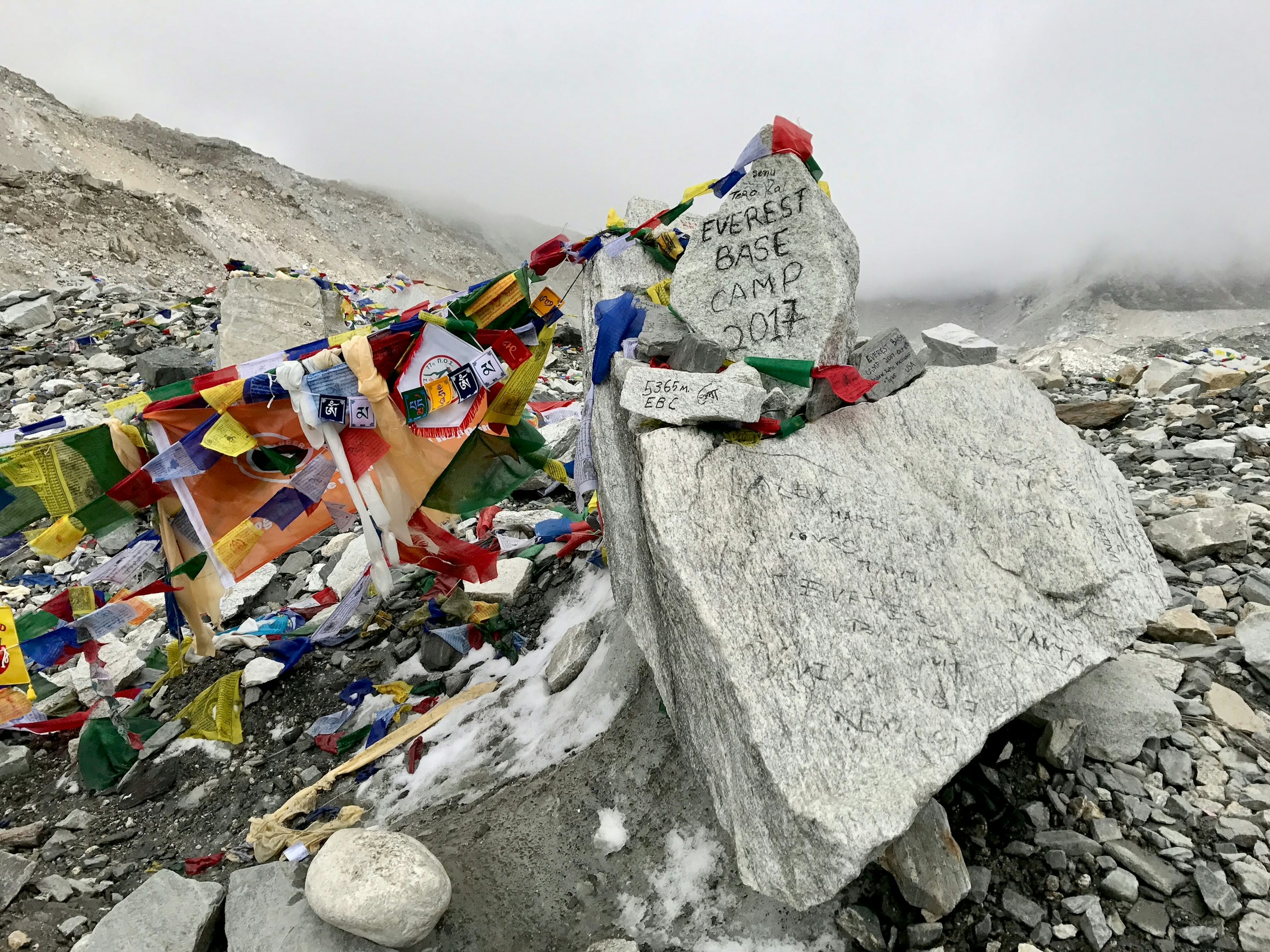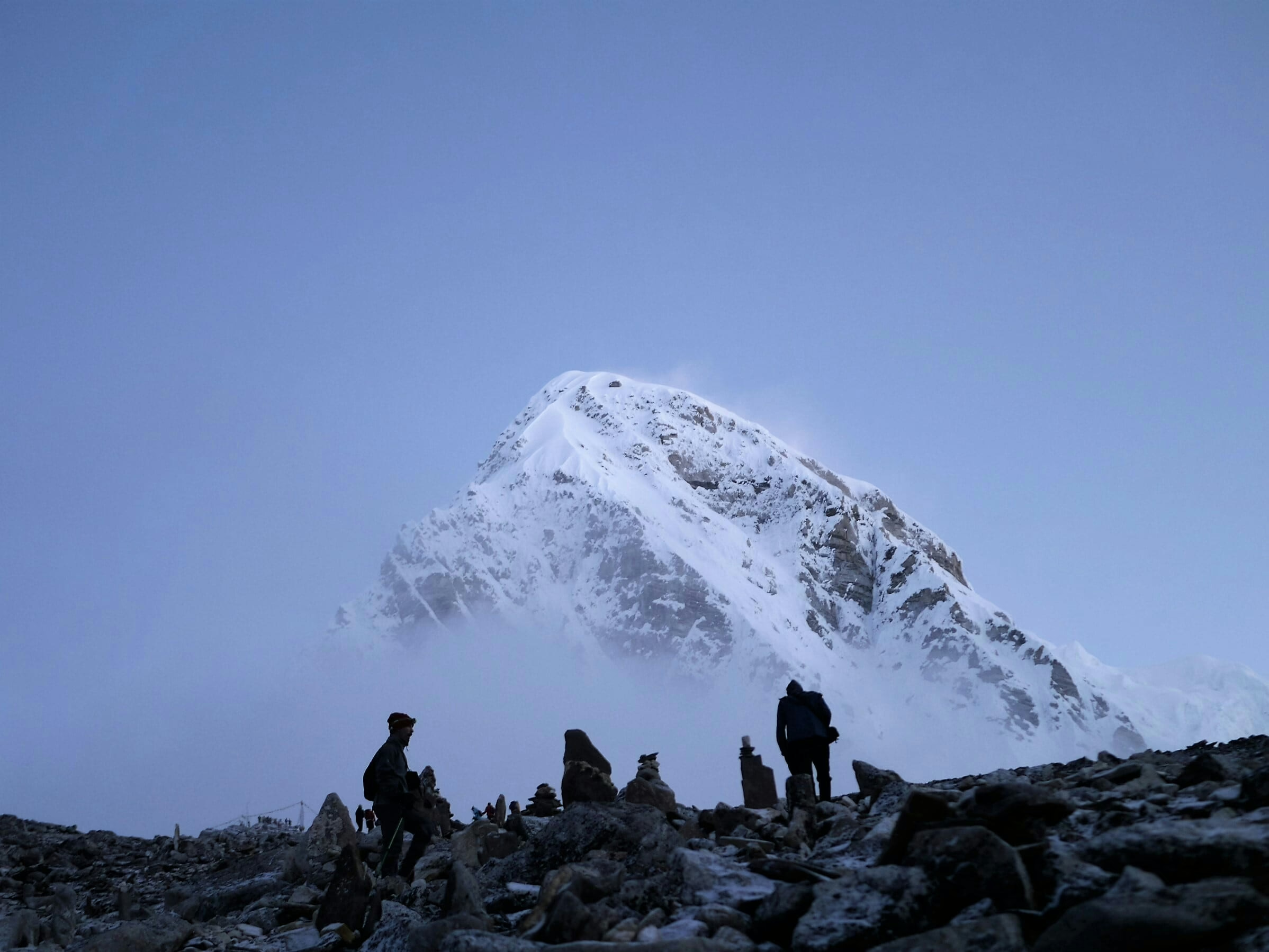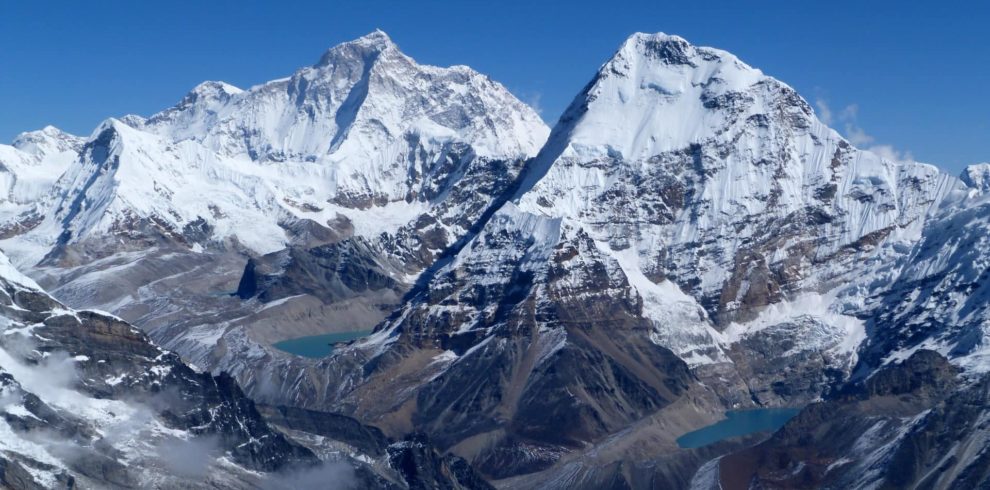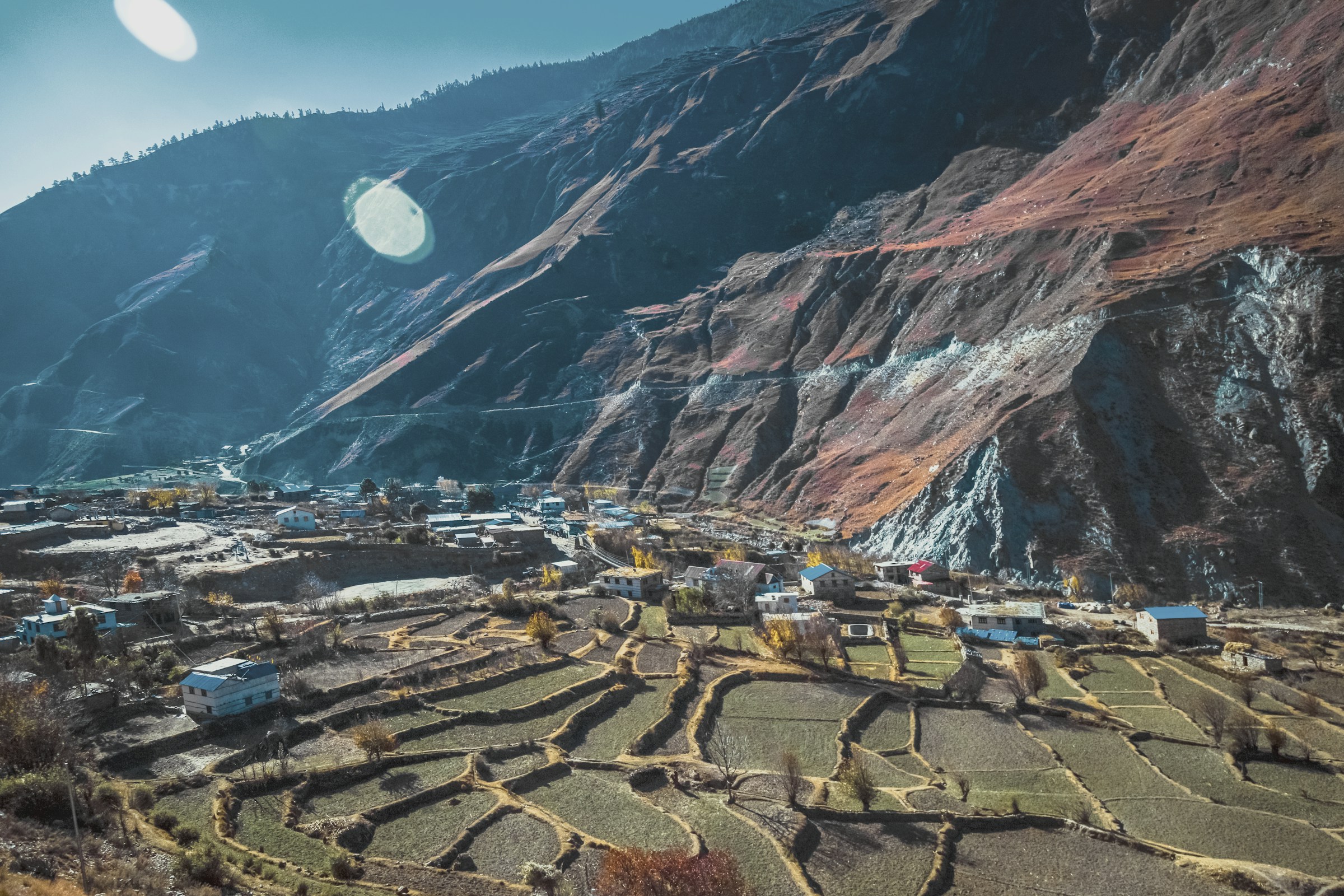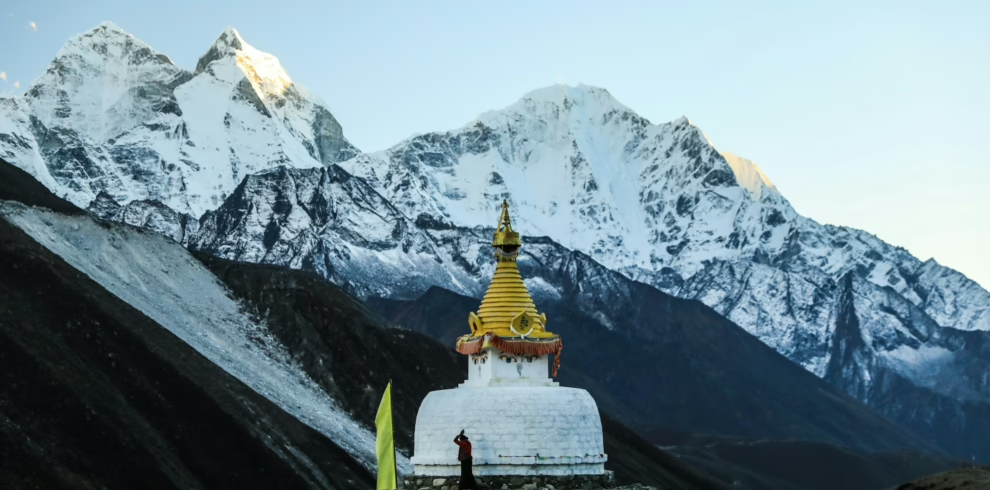Embark on the unforgettable journey to Everest Base Camp, the heart of Sherpa land, where you’ll be treated to stunning views of the Everest Himalayas, breathtaking sunrises, majestic landscapes, ancient monasteries, and the rich Sherpa culture. Sign up now to explore the Nepalese Himalayas and experience a life-changing adventure.
The Luxury Everest Base Camp Trek with Helicopter Return from Gorakshep to Kathmandu (10 days) is the perfect option for those with limited time who still want to experience the iconic Everest Base Camp. Designed for those seeking both adventure and comfort, this trek offers an extraordinary opportunity to explore the Everest region and enjoy a helicopter return for a seamless end to your journey.
This trek is among the most rewarding and sought-after adventures, combining spectacular views of the Himalayan ranges, visits to ancient Buddhist monasteries, and encounters with local wildlife. To undertake this journey, you’ll need a good level of physical fitness and mental resilience—but the rewards are beyond worth it.
10 days / 9 nights EBC trip and return via Helicopter
Step into the Sacred Everest Region
Highlights
- Enjoy a scenic 30-minute mountain flight to Lukla
- Explore the vibrant Sherpa town of Namche Bazaar
- Visit the Sherpa Museum to learn about local culture and traditions
- Take in breathtaking views of Mt. Everest, Lhotse, Nuptse, Ama Dablam, and more
- Hike across the Khumbu Glacier and see the dramatic Khumbu Icefall
- Reach Everest Base Camp and experience 360° mountain views—all within 10 days (arrival to departure)
- Witness a stunning sunrise over Mt. Everest and the Khumbu Glacier from Kalapatthar
- Fly back to Kathmandu via a scenic helicopter ride from Kalapatthar/Gorakshep, enjoying panoramic Himalayan views
Itinerary
Upon your arrival at Tribhuvan International Airport, our representative will greet you and transfer you to your hotel in a private tourist vehicle. Once you're settled at the hotel, we will schedule a trip briefing at the hotel lobby or restaurant.
Your Everest Base Camp Trek with Helicopter Return begins with a drive in bus to Ramechapp and a scenic 45-minute morning flight to Lukla, offering breathtaking views of the Himalayas. Upon landing at Tenzing-Hillary Airport, you'll be welcomed by our experienced Sherpa team and begin your trek to Phakding. The trail descends to the Kusum River and follows the east bank of the Dudh Koshi. It's important to hike slowly to help your body acclimate to the altitude. After a short walk, you'll reach Phakding and spend the night at a local Sherpa-run teahouse.
On the way to Namche Bazaar, you'll pass through picturesque Sherpa villages like Bengkar, Monjo, and Jorsale. The trail from Phakding to Namche includes several steep ascents and descents, which can be tiring—but the fresh mountain air, stunning landscapes, and anticipation of reaching Everest keep you inspired. You'll enjoy views of snow-covered peaks like Kusum Kanguru and Thamserku as you cross the Dudh Koshi River near Bengkar. After passing a few settlements, you'll reach the Sagarmatha National Park entrance checkpoint, where your permits will be checked. From there, you'll follow a relatively level path upstream to the confluence of the Dudh Koshi and Bhote Koshi rivers. A final ascent over a suspension bridge brings you to Namche Bazaar, with breathtaking views of Everest, Lhotse, Nuptse, Ama Dablam, and Taweche along the way.
Today is your first acclimatization day in Namche Bazaar as per the Everest Base Camp Trek with Helicopter Return itinerary. You'll take it easy and allow your body to adjust to the altitude. Namche is a vibrant town in the Khumbu region, offering ATMs, internet cafés, restaurants, bakeries, and more. You can explore nearby viewpoints such as Thamo or Khunde, and visit the Tourist Visitor Center to learn about Everest climbers, Sherpa culture, and local traditions. A hike to the Everest View Hotel is also an option, offering close-up views of Everest, Ama Dablam, Lhotse, Nuptse, Cho-Oyu, Thamserku, Tawache, and other peaks. After a day of sightseeing and short hikes, you’ll return to Namche for the night. Along the way, you can also explore a museum, photo gallery, and nearby Sherpa villages.
Today, your Everest Base Camp Trek with Helicopter Return continues with a gradual ascent from Namche Bazaar to Tengboche. The trail offers spectacular views of Mount Everest, Ama Dablam, Lobuche, and other nearby peaks. You’ll first descend to the Dudh Koshi Valley at Pungi Thenga, then climb steadily to Tengboche. Once there, you’ll visit the famous Tengboche Monastery—an important spiritual site along the route to Everest Base Camp. Set against a stunning backdrop, the monastery offers breathtaking views of Ama Dablam towering just behind it, along with Everest, Lhotse, Nuptse, and Lobuche.
From Tengboche, the trail detours briefly through a forest of birch, juniper, fir, and rhododendron to reach Deboche, where you can visit a Buddhist nunnery and enjoy panoramic mountain views. The Everest Base Camp Trek with Helicopter Return route then follows the Imja Khola, passing several chortens en route to Pangboche, which offers stunning views of Ama Dablam. As you ascend from lush Pangboche to the arid, alpine landscape of Shomare, the vegetation begins to thin. Continuing through Shomare and Orsho, you’ll catch a glimpse of Mt. Pumori’s summit ridge. After passing several meadows and seasonal yak herder settlements, you'll reach the cold and windy village of Dingboche. While snow-covered in winter, Dingboche transforms into a lush pastureland dotted with grazing yaks during the summer.
Today is your second acclimatization day, scheduled due to the higher altitude. While you’ll enjoy spectacular views, it's important to rest and prepare for the final stretch of the trek. You can explore Dingboche or take short hikes to nearby villages like Chhukung and Imja. Popular acclimatization hikes include Nagarjun Hill (5,100m) and Chhukung Ri (5,546m), both offering panoramic views of Mt. Makalu, Mt. Lobuche, Thamserku, Ama Dablam, and more.
The trek becomes more challenging after Dingboche due to the steeper elevation. You'll climb a steep slope to reach Dughla (Thukla), offering a break from the otherwise straight trail. From Dughla, a tough ascent leads to Chupki Lhara, where you'll find stone memorials draped in prayer flags honoring climbers like Scott Fischer and Babu Chiri Sherpa, who lost their lives on Everest. As you reach the Khumbu Glacier moraine, you'll be greeted by stunning views of Khumbutse, Lingtren, Pumori, and Mahalangur Himal. The trail then eases as it follows the valley toward Lobuche. From the glacier ridge in Lobuche, you'll see Everest Base Camp, Kalapatthar, the Khumbu Glacier, and glacial moraines.
Today is the highlight of your Everest Base Camp Trek with Helicopter Return. You’ll start early, walking gradually along the Khumbu Glacier toward Gorakshep. Be cautious of loose stones and boulders as you proceed. Snow-capped mountains will surround you as you near Gorakshep. From there, you’ll continue up to Everest Base Camp, navigating a steep, gravel-covered path. At the base of Mount Everest, beneath the Khumbu Icefall, you’ll see brightly colored tents during the climbing season. Standing beneath some of the world’s tallest peaks is a truly awe-inspiring experience. After taking in the breathtaking views, you'll return to Gorakshep for the night.
You’ll rise early and trek to Kalapatthar, a famous viewpoint in the Everest region, renowned for its sunrises and panoramic mountain views, especially of Mount Everest. From Kalapatthar, you’ll witness the sun’s golden rays illuminating Everest and surrounding peaks. After spending some time there, you’ll descend to Gorakshep. A helicopter will pick you up in Gorakshep and fly you over the Everest region, offering breathtaking views of the Himalayas, Gokyo Lakes, Khumbu Glacier, Sagarmatha National Park, and more. Upon arrival in Kathmandu, you’ll be transferred to your hotel, marking the end of your Luxury Helicopter Return Everest Base Camp Trek.
Includes/Excludes
Cost Includes
- Private airport pickup from Kathmandu International Airport
- 2 nights in a 3-star hotel in Kathmandu with breakfast (Day 1 and Day 10)
- 8 nights of upgraded trekking accommodation as per the itinerary
- All meals during the trek (breakfast, lunch, and dinner)
- Purified drinking water (Ef-Chlor tablets)
- All ground transportation in a private, comfortable vehicle as per itinerary
- One-way flight from Kathmandu or Ramechhap to Lukla (subject to government regulations)
- Experienced, English-speaking, government-licensed trekking guide
- Shared helicopter flight from Gorakshep to Kathmandu
- Green Lotus Trekking duffel bag, t-shirt, and trekking map
- All required trekking permits (National Park Permit, TIMS)
- Medical kit carried by your trekking guide
- All applicable government and local taxes
- Free luggage storage at Green Lotus Trekking during the trek
- Airport drop-off at departure, based on your flight schedule
Cost Excludes
- Nepal visa fee, international airfare, and travel insurance
- Extra nights in Kathmandu due to early arrival, late departure, or early return from the trek for any reason
- Meals in Kathmandu (except breakfast), or in case of early return from the trek
- Porter service (recommended: 1 porter for every 2 trekkers)
- Personal expenses (e.g., phone calls, internet, laundry, bar bills, battery charging, bottled/boiled water, etc.)
- Tips for guides, porters, and drivers
FAQs
If your flight is canceled due to weather, you’ll need to stay an extra night at your own expense. Sometimes, helicopter companies offer charter flights even when airlines cancel; these are available at an additional cost.
The Everest region has mobile network coverage. With a local SIM card (NCELL or NTC), you can use your phone, though reception may be spotty in some areas. Internet and video calls work in most places. Our guides also carry satellite phones for emergencies.
If a group member becomes ill, the guide will assess the situation and decide whether to continue or descend. If the condition worsens, an air ambulance will evacuate them to Kathmandu. The rest of the group can continue with an assistant guide.
You can buy bottled or filtered water at teahouses along the trail. To save money and reduce waste, use a reusable bottle with purification tablets or iodine. Drink at least 3–4 liters of water daily to stay hydrated at high altitudes.
Teahouses typically have western-style toilets. At lower altitudes, you may get attached bathrooms with hot showers. Higher up, shared squat toilets are more common. In extreme cold, indoor water may freeze—carry toilet paper and hand sanitizer at all times.
Most purchases along the route require local cash. Some lodges in Lukla and Namche may accept credit cards, but we recommend carrying enough Nepali rupees for the trek. You can exchange money or use ATMs in Kathmandu before departure.
Yes, you can extend your trek by a few days for an additional fee, which covers guides, porters, food, and accommodation. Let us know in advance so we can make arrangements.
Yes, vegetarian meals are widely available at teahouses. We recommend choosing vegetarian options at altitude to avoid digestive issues, as meat may not always be fresh.
Trek luggage should not exceed 15 kg per person, including your hand-carry. One porter will carry bags for two trekkers (maximum 30 kg total). Excess baggage on the Lukla flight incurs extra charges.
You can safely store extra belongings at your hotel in Kathmandu or at our office, both of which offer secure storage during your trek.
The Everest Base Camp Trek with a Helicopter Return from Gorakshep to Kathmandu is one of the most popular and rewarding treks, offering stunning views of the Himalayan ranges, ancient Buddhist monasteries, and local wildlife. This journey requires good physical health, stamina, and mental strength.
The Luxury Everest Base Camp Trek with Helicopter Return begins with a scenic 35-minute flight to Lukla, the gateway to Everest. From there, we trek through Sherpa villages, enter Sagarmatha National Park, and follow the north side of the Dudh Koshi Valley. Along the way, we cross several suspension bridges and visit the Sherpa villages of Namche Bazaar, Tengboche, Pangboche, Lobuche, and finally, Everest Base Camp. Reaching base camp is a moment to celebrate—there’s no better place to be than at the foot of Everest.
Next, we ascend to Kala Patthar, the highest point of the trek, for panoramic views of Everest (8,848 m), Lhotse, Nuptse, Pumori, Ama Dablam, Khumbutse, Thamserku, Island Peak, and more. After descending to Gorakshep, we take a scenic helicopter flight back to Kathmandu, offering breathtaking aerial views of the Himalayas, valleys, and hills.
This itinerary is carefully designed to account for Lukla flight cancellations and other risks. We organize trips to fit your schedule and needs, ensuring safety and security throughout the journey. Feel free to check our detailed itinerary and contact us for any customizations. We’re happy to tailor the trip to suit your preferences. You can also view the Everest Base Camp Trek map to help plan your journey.
Benefits of Booking the Everest Base Camp Trek with Helicopter Return with Us
- Complimentary international airport pickup and drop-off
- Everest Base Camp trekking map
- Medical kit (provided if needed)
- Oximeter for monitoring oxygen levels at high altitude
- Free luggage storage at Green Lotus Trekking during the trek
Preparation for the Everest Base Camp Trek with Helicopter Return
Your physical and mental fitness are crucial for completing the Luxury Everest Base Camp Trek with Helicopter Return. If you lack prior trekking experience, we recommend preparing in advance through regular activities such as cycling, jogging, or morning walks for a few weeks or months before booking. Previous hiking or climbing experience is helpful but not mandatory.
The trek reaches a maximum altitude of 5,545 meters at Kala Patthar and includes several ascents and descents through farmland, terraced hills, and Sherpa villages. You should be prepared to walk 5 to 6 hours daily and be in good physical condition.
Mental resilience is also important, as confidence plays a key role in coping with the physical challenges of the trek. If you have any respiratory issues, please consult your doctor before the trip and share a copy of the medical report with us upon booking.
Useful Information for Everest Base Camp with Helicopter Return
Best Time to Visit Everest Base Camp with Helicopter Return
The best seasons for this trek are spring (March–May) and autumn (September–November), offering clear skies, mild temperatures, and stunning mountain views. While trekking is possible in winter (December–February) and summer (June–August), these seasons pose additional challenges due to snowfall and rain. Winter offers beautiful, snow-covered landscapes but is extremely cold. Summer brings rain in lower regions, making trails slippery, though the upper trails remain dry. For experienced trekkers seeking solitude, these off-seasons can still be a rewarding option.
Meals on the Everest Base Camp Trek
- Breakfast typically includes pancakes, cornflakes, local bread, chapatti, porridge, eggs (any style), toast, hash browns, muesli with milk, and more.
- Lunch and Dinner menus offer Dal Bhat (rice, lentils, and vegetables), thukpa, pasta, momos, Tibetan bread, Sherpa stew, soups, sandwiches, salads, pizza, and desserts. Dinner often includes a wider selection of hot soups like tomato, chicken, garlic, and mushroom.
Accommodation
In Kathmandu, you’ll stay at a three-star hotel. Along the trekking route, accommodations are in local teahouses—modest yet comfortable lodges built for trekkers. Rooms typically feature simple beds with foam mattresses, basic furnishings, and shared toilets. Heating is limited, with central stoves in common areas. Hot showers and electric charging are available in some locations, often for an additional fee. Twin-sharing rooms are recommended, especially during peak seasons when single rooms can be difficult to secure.
Difficulty Level
The trek involves daily hikes of 5–6 hours across rugged, high-altitude terrain, with steep ascents and descents. It’s challenging for first-time trekkers, especially those unfamiliar with Himalayan conditions. Physical and mental fitness is essential. The risk of altitude sickness increases above 4,000 meters, so proper acclimatization and preparation are crucial. Expect to encounter narrow trails, rocky paths, meadows, deep valleys, and boulder-covered routes.
Travel Insurance
Travel insurance is mandatory and must cover emergency medical treatment and helicopter evacuation up to 6,000 meters. A copy of your policy must be submitted within a week of booking. This ensures we can coordinate prompt rescue in case of emergency. Always confirm with your provider that the policy includes high-altitude helicopter evacuation—don’t rely solely on website summaries.
Altitude Sickness: Symptoms & Prevention
Altitude sickness is caused by reduced oxygen levels at high elevations, typically starting around 3,000 meters. Common symptoms include headache, fatigue, nausea, dizziness, appetite loss, and sleep issues. To reduce the risk:
- Stay hydrated and avoid alcohol.
- Maintain a balanced diet.
- Bring Diamox or similar altitude sickness medication.
- Ascend gradually and allow proper time for acclimatization.
- Rest or descend immediately if symptoms appear.
- Practice good hygiene to support overall health.
Packing List
Essentials to pack for your helicopter return Everest Base Camp Trek:
- Daypack (30L) with rain cover
- Trekking and waterproof pants
- Thermal tops and bottoms
- T-shirts, fleece jacket, down jacket, windbreaker
- Hat, woolen cap, sunglasses, gloves (inner & outer)
- Socks, underwear, towel, flip-flops, toiletries
- Sunscreen, wet wipes, sanitizer
- Headlamp, power bank, batteries
- Sleeping bag liner, water bottles, purification tablets
Safety Measures
Green Lotus Trekking prioritizes your safety with the following protocols:
- Experienced guides trained in wilderness first aid
- Regular health check-ins and motivation from leaders
- Safe, hygienic food and accommodation standards
- Full emergency gear and first-aid kits on every trek
- Authority to alter or cancel the trek in case of illness or adverse conditions
Booking Procedure
Green Lotus Trekking is a licensed and experienced trekking operator, affiliated with the Trekking Agencies’ Association of Nepal (TAAN) and the Nepal Mountaineering Association (NMA).
To book:
- Pay a 10% deposit
- Email us your passport copy, travel insurance, passport-sized photo, and flight details within one week
- Pay via bank transfer, Western Union, or online. In Nepal, payments can be made in cash, by credit card, or by local bank transfer. We’ll provide full payment details upon booking.

